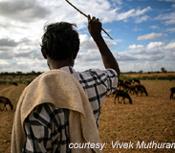Climate security in the Bay of Bengal
Climate security in the Bay of Bengal
The Bay of Bengal (BoB) region is emerging as an important focal point for climate security risks. This is largely due to a multi-layered interplay of geopolitical, geostrategic, and climate-related regional dynamics. It forms the final leg between West and East Asia. The region is one of the most climate-vulnerable in the world. Its strategic, political, social and economic faultlines are also extensive. Together they create fertile ground for volatile security dynamics, social friction and violent conflict. It is a textbook example of the complex relationship between climate change and security, and how an aggregate of both could create emerging challenges for policy-planners. This Institute of Peace and Conflict Studies(IPCS) - Clingendael's PSI report studies the impacts of climate change on transnational and intra-country conflict faultlines, as well as strategic and military dynamics in the BoB by overlaying climate threat profiles over security- and conflict-centric analysis. The broader objective is to arrive at a better understanding of how climate threats interact with conflict and security in the region.







